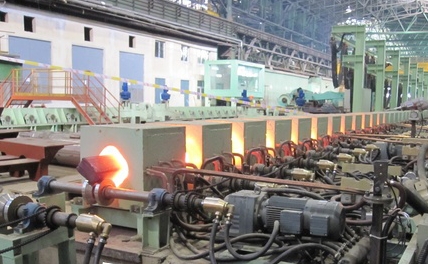- 23
- Dec
Mi a célja a felületi hőkezelésnek
Mi a célja a felületi hőkezelésnek
①Improve the wear resistance of parts. High-carbon martensitic hardened surface layer can be obtained by carburizing and quenching of steel parts; dispersion hardened surface layer of alloy nitride can be obtained by nitriding method for alloy steel parts. The surface hardness of steel parts obtained by these two methods can reach HRC58~62 and HV800~1200 respectively. Another way is to form a wear-reducing and anti-adhesive film on the surface of the steel to improve the friction conditions, which can also improve the wear resistance. For example, the steam treatment surface produces a ferroferric oxide film which has the effect of anti-adhesion; the surface vulcanization obtains a ferrous sulfide film, which can have both anti-wear and anti-adhesion effects. The multi-element co-infiltration process developed in recent years, such as oxygen-nitriding, sulfur-nitrogen co-infiltration, carbon-nitrogen-sulfur-oxy-boron five-element co-infiltration, etc., can simultaneously form a high-hardness diffusion layer and anti-sticking or anti-friction film, effectively improving The wear resistance of the parts, especially the adhesion resistance.
Nak nek
② Javítja az alkatrészek fáradási szilárdságát. A karburálás, nitridálás, lágy nitridálás és karbonitridálás módszerei mind megerősíthetik az acél alkatrészek felületét, miközben maradék nyomófeszültséget képeznek az alkatrészek felületén, hatékonyan javítva az alkatrészek fáradási szilárdságát.
Nak nek
③Improve the corrosion resistance and high temperature oxidation resistance of parts. For example, nitriding can improve the atmospheric corrosion resistance of parts; after aluminizing, chromizing, and siliconizing steel parts, it will react with oxygen or corrosive media to form dense and stable Al2O3, Cr2O3 , SiO2 protective film, improve corrosion resistance and high temperature oxidation resistance.
Nak nek
Általában az acél részek rideggé válnak, amikor megkeményednek. Ha a felületi keményítési módszert alkalmazzák a felületi keménység növelésére, a mag továbbra is jó szívóssági állapotban tartható, így jobban fel tudja oldani az acél alkatrészek edzése és szívóssága közötti ellentmondást, mint az alkatrészek integrált kioltási módszere. A kémiai hőkezelés egyszerre változtatja meg az acél alkatrészek felületének kémiai összetételét és szerkezetét, így hatékonyabb, mint a felületedzési eljárások, mint a nagy- és középfrekvenciás elektromos indukció és a lángoltás. A behatoló elem megfelelő megválasztásával az alkatrész különféle teljesítménykövetelményeinek megfelelő felületi réteget kaphatunk.

